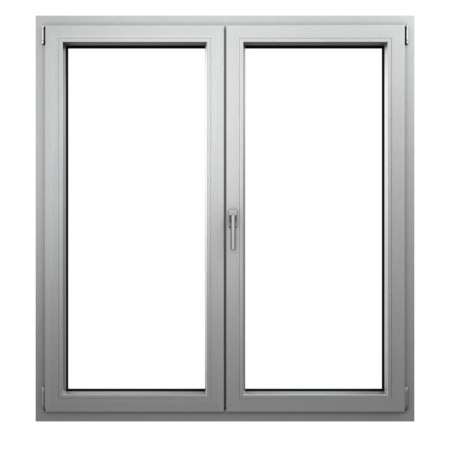Best Windows for Cold Climates

Picking windows for cold regions requires focusing on performance, not just looks. If you live in an area prone to heavy snow, low temperatures, and harsh winters in general – this article will help you pick the best windows to keep the warmth inside – and save on the bills.
Understanding cold climate conditions in the U.S.
When we refer to cold climates, we’re talking about regions that experience:
- low temperatures
- significant snowfall
- extended winter seasons
These conditions create unique challenges for buildings and their window systems. In many regions, temperatures consistently hovering around 20°F to 25°F are considered cold, though many northern states regularly experience much harsher conditions.
In January 2025 we felt the Arctic blast and states like North Dakota felt it full of temperatures reaching −25°F to −30°F.
Cold climate regions typically face months of freezing temperatures, where windows must perform consistently day after day in challenging conditions. Beyond just low temperatures, these areas often deal with strong winds that can find even the smallest gaps in window seals, as well as cycles of snow and ice that test the durability of window materials and installation quality.
Which states benefit most from energy-efficient windows?
- Alaska – The coldest state in the U.S., with average winter temperatures of 26.6°F and frequent sub-zero conditions. In interior Alaska, temperatures can plunge to -50°F, making exceptional window insulation critical.
- North Dakota & Minnesota – These states regularly see winter temperatures drop below 0°F. The flat landscape also means high winds that can intensify heat loss through windows.
- Michigan, Idaho, Wyoming – These states experience heavy snowfall and extended winters. The combination of snow load, wind, and persistent cold requires windows with excellent structural integrity and insulation properties.
- Maine & New Hampshire – The long, cold seasons in these northeastern states last from late fall into early spring. Many homes are heated with expensive fuel oil, making energy-efficient windows particularly valuable for reducing heating costs.

Windows for cold climate – what features you should aim at?
When shopping for windows in cold-climate regions, homeowners often struggle to identify which specifications truly matter for winter performance. While the options can seem overwhelming, focusing on these key features will help you select windows that actually keep the cold where it belongs – outside:
- Triple-glazed or quadruple-glazed windows create multiple barriers against cold, with each additional pane reducing heat loss during extended freezing periods.
- Low U-value is critical – the lower this number, the better the window insulates. For cold climates, aim for windows with the lowest heat transfer coefficient possible.
- Gas-filled insulation between panes enhances performance, with argon commonly used and krypton offering even better insulation for extremely cold regions.
- Proper weatherstripping prevents drafts and condensation. OKNOPLAST’s Warmatec technology creates a thermal barrier at the glass edge, reducing condensation risk and improving overall insulation.
- Design pressure rating indicates how well windows resist strong winds during harsh blizzards – a critical factor for maintaining both window integrity and home comfort during winter storms.
Remember that even the best windows need proper installation to perform effectively in cold climates. A layered installation approach prevents thermal bridges where cold can transfer through the window frame and surrounding wall. This method includes proper flashing, insulation around the frame, and careful sealing of all potential gaps. Without this comprehensive installation strategy, even high-performance windows may develop cold spots that compromise your home’s comfort and efficiency.
Energy Star and Passive House Certifications – do they matter?
Yes, they do. Look for Energy Star-rated windows to ensure compliance with the highest efficiency standards. These certifications verify that windows meet strict performance criteria specifically relevant to your climate zone.
Passive House-certified windows guarantee maximum energy savings in extreme climates. This rigorous standard ensures windows will perform exceptionally well even in the coldest environments.
Tilt and turn windows that can make a difference
Tilt and turn windows from OKNOPLAST achieve exceptional thermal performance through advanced features like Warmatec warm edge spacers. This technology creates a thermal barrier around the glazing package, reducing heat loss and preventing condensation—critical during harsh winters.
The unique dual-function design offers significant advantages in cold climates:
- Tilt Mode: Allows controlled airflow without excessive heat loss
- Turn Mode: Enables easy cleaning and full ventilation when needed
This functionality gives homeowners precise ventilation control during winter months without compromising indoor temperatures.
Engineered specifically for harsh conditions, these windows maintain their structural integrity and sealing performance even during extreme cold, heavy snow loads, and strong winds—making them an ideal solution for northern climates.
For more insights on selecting the right windows for your specific climate and home design needs, explore our other informative articles on the OKNOPLAST blog.
We’re here to support you at every stage
Request a quote, consult your project, or simply ask us anything—we’re ready to help make your vision a reality.
Send a request
"*" indicates required fields





